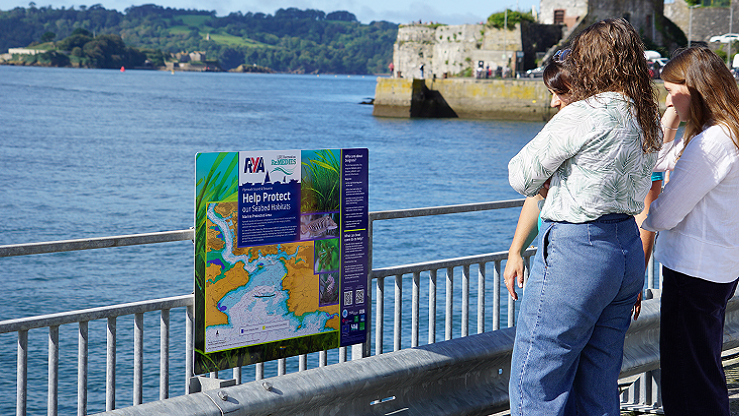
UK seagrass project reaches final push
The ReMEDIES seagrass restoration project, funded by the EU LIFE programme, is heading into its final six months.
Seagrass, often referred to as the ‘lungs of the sea,’ plays a vital role in the marine ecosystem. During the project, there have been several methods of growing this vital habitat trialled and tested. So far, approximately 1.8 million seeds have been planted using three different methods.
It has been nearly four years since the RYA became a partner in the ReMEDIES seagrass restoration project. The landmark project, made up of partners Ocean Conservation Trust, Marine Conservation Society, Plymouth City Council, the RYA, and led by Natural England, focuses on the rejuvenation of seagrass habitats across five sites in the south of England.
The seagrass project is England’s largest seagrass rejuvenation effort; however, the project is about more than just planting. Traditional mooring and anchoring techniques can have a detrimental effect on underwater habitats, scouring the seabed and uprooting plant life.
As part of the project, the RYA’s environmental programme The Green Blue has developed and published ‘The Green Guide to Anchoring and Mooring.’ The guide details the alternatives to traditional methods of securing a boat and highlights the benefits of safeguarding seagrass.
At some of the project sites, advanced eco-mooring systems (AMS) have been installed to mitigate the impact of traditional moorings and anchoring. Alongside other partners in the project, The Green Blue has also been delivering a programme of educational outreach events and webinars to raise awareness of anchoring best practices amongst recreational boat users.
In Cawsands Bay, Plymouth, ten Stirling AMS and three Seaflex AMS were installed in 2021 and 2022, replacing existing traditional block and chain moorings in the area. In April 2021, a voluntary no-anchor zone (VNAZ) was also introduced at Jennycliff Bay in Plymouth Sound.
In the Solent, four AMS were installed in Yarmouth Harbour in 2020 and 2021, with a further two AMS installed at Cowes Harbour in 2022. There are also plans for the introduction of a VNAZ at Osborne Bay.
Last autumn, information panels produced by The Green Blue were installed at six marinas across Plymouth. The panels highlight where seagrass areas are located, and help water users to identify areas to avoid anchoring in. There are plans to install at least one information board at each of the five sites in 2024.

The first seagrass-growing technique tested by the team was to deploy hessian bags containing seeds and soil directly into the sea. The second method trialled was planting seeds into hessian pillows containing cotton and sand. The seeds were then nurtured until they became juvenile plants and were large enough to be released into the sea.
The most recent batch of seagrass seeds have been sown by directly injecting them into the seabed at Plymouth Sound. This technique uses a mastic style gun, specially developed by the Ocean Conservation Trust, to carefully insert the seeds into the seabed.
Approximately 5.6 hectares of seabed have now been planted with seagrass, this includes 4.2 hectares in Plymouth Sound and 1.4 hectares in the Solent maritime.
In summer 2024, representatives from the project partners will be presenting their experiences and knowledge at the World Seagrass Conference. Sharing lessons from the project supports the international need for seagrass restoration and recovery around the world.
The project continues to be England’s largest seagrass rejuvenation effort, but more planting is required to meet the project’s aim of establishing seagrass in 8-hectares before October 2024.
There will be an overview published of the project’s learnings and achievements at the close of the project later this year.
The post UK seagrass project reaches final push appeared first on Marine Industry News.
